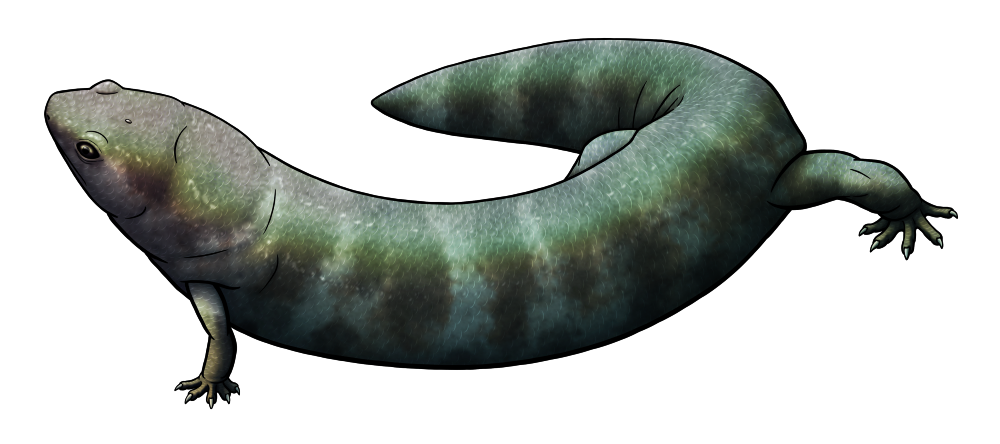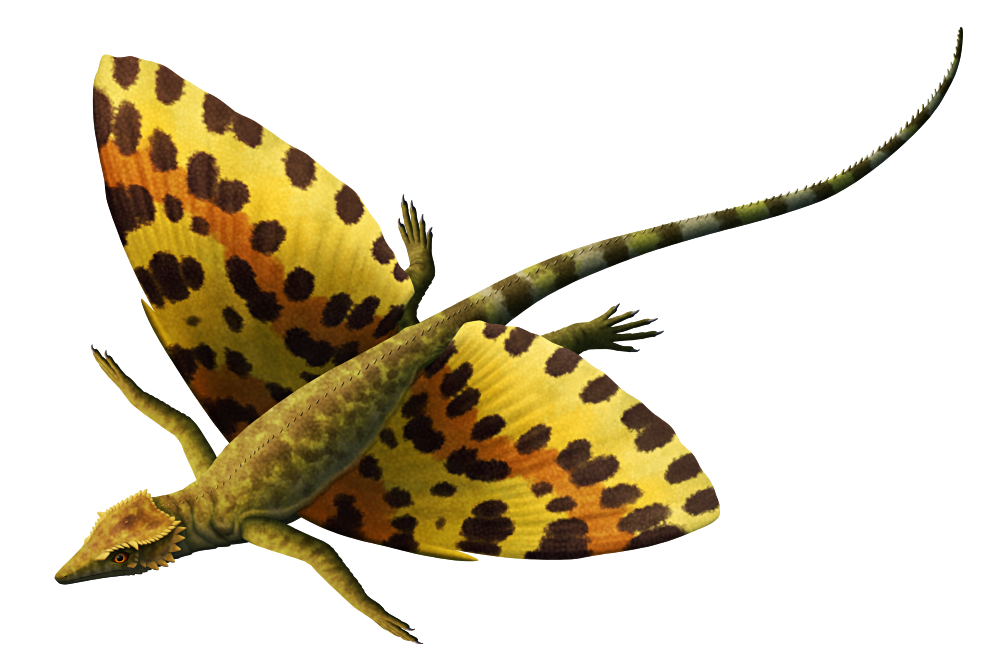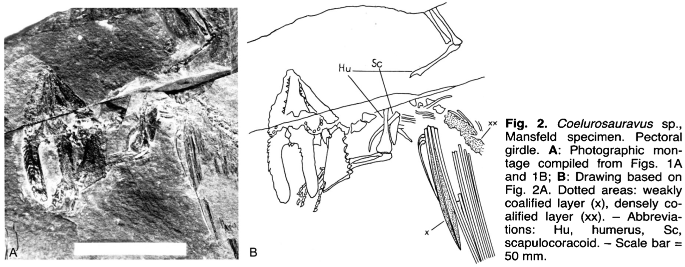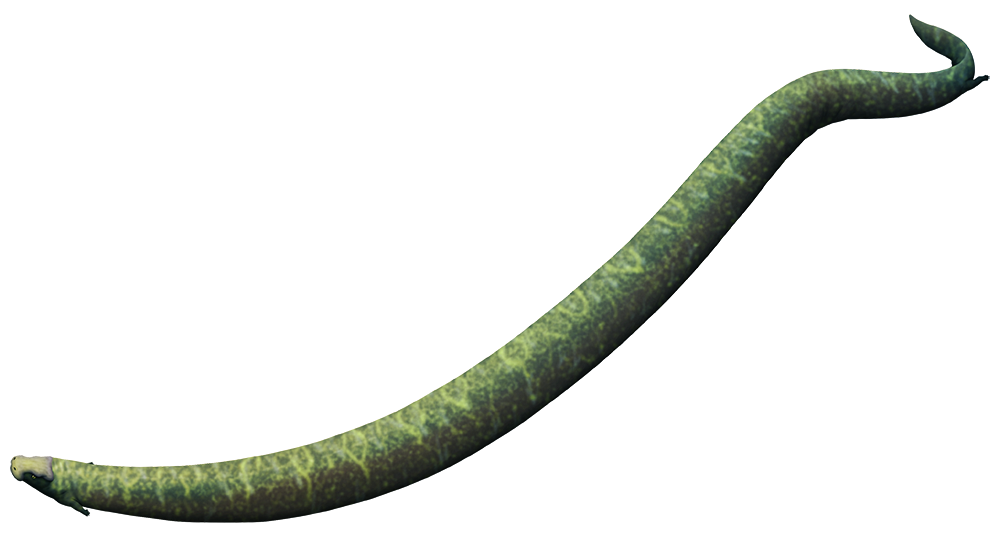The choristoderes were a group of aquatic reptiles that mostly inhabited freshwater environments. Known mainly from North America, Europe, and Asia, they first appeared in the fossil record in the Late Triassic (~205 mya) – although their lineage could potentially go back further than that – and they varied in appearance from large long-snouted croc-like creatures to more lizard-like and miniature plesiosaur-like forms.
Many them were fully aquatic and spent their entire lives in the water, with some developing the ability to give live birth and others returning to land only to lay eggs (with only females having well-developed enough limbs to be able to haul themselves out onto shore). In some places their fossils are incredibly common, with every life stage represented from babies to adults (even one with two heads!), and yet despite having such detailed knowledge of their lives we still don’t know exactly what type of reptile they actually were.
Their evolutionary origins and relationships are very unclear, with the only real certainly being that they’re at least diapsids. They’re often classified as either archosauromorphs (closer related to crocodilians and dinosaurs/birds) or as lepidosauromorphs (closer related to lizards), but they could also be a much earlier separate branch of the reptile family tree.
Some of the large crocodilian-like neochoristoderes survived into the Cenozoic and initially did quite well for themselves – even outcompeting actual crocodilians in the northern continents for a while – but then they seem to have fallen victim to the cooling and drying climate of the Eocene-Oligocene extinction about 33 million years ago.
But that wasn’t the end of the choristodere lineage just yet.
A small number of fossils of a little choristodere named Lazarussuchus have been found in a few different places around Europe, with the youngest specimens dating to as recently as the Early Miocene (~20-16 mya). Surprisingly it wasn’t closely related to the neochoristoderes at all, but instead seems to have been part of a much older and more “primitive” branch of the choristodere family tree that must have been surviving since at least the mid-Jurassic with very little presence in the fossil record.
At about 30cm long (1′) it was less aquatic than most other choristoderes, with large claws that would have given it good traction on land and a more generalized lizard-like body plan. One specimen even preserves soft tissue impressions, showing that its toes lacked webbing and that it had a low crest running along its tail.
Its lack of specialization may have been the reason for its longer survival, being able to adapt to a wider variety of environments compared to its more water-reliant cousins.
It’s unclear exactly how much closer to present day these rare last choristoderes survived. If they managed to make it through the mid-Miocene extinction then they might potentially have persisted until the onset of the Pleistocene Ice Age 2.5 million years ago – but their fossils are scarce enough that we’ll probably never know for certain.





